I have had the privilege of spending time with Chris Ofili in his studio, looking at the series of large paintings he is completing as the artist selected for the British pavilion at the 2003 Venice Biennale. These first impressions were written not so much ‘about’ as ‘with’ the work.
Chris Ofili is on the move. He is finishing the huge canvases which will be exhibited in his Within Reach show for the British pavilion at the 2003 Venice Biennale. As we move around his surprisingly dark studio space (the windows were already covered by green and red cloths when he found it!), reflecting now on one, now on another of these spot-lit, vibrant and pulsating visionary scenes, one is made aware again how intense and protracted is the ‘work’ of painting for Ofili. Only he knows how many of these he has on the go at any one time – bringing them out one after another, working on them for a while, putting them away again to, as it were, coalesce – perhaps even fundamentally to change shape.

What matters for the journey, which this series chronicles, is not arriving at some final Beatific Vision but the more earthly, carnal dreams and visions to be glimpsed along the way.
The astonishing work exhibited in the lower room of the Victoria Miro gallery in Freedom One Day, with its restricted red-green-black palette, its luxuriant, luminous foliage shapes and those enormous, reclining, black Afro-lover figures, can now be seen to be only part of a series, a longer, on-going, more ambitious enterprise: each new painting emerging as yet another ‘scene’ from an episodic and as yet incomplete narrative journey.
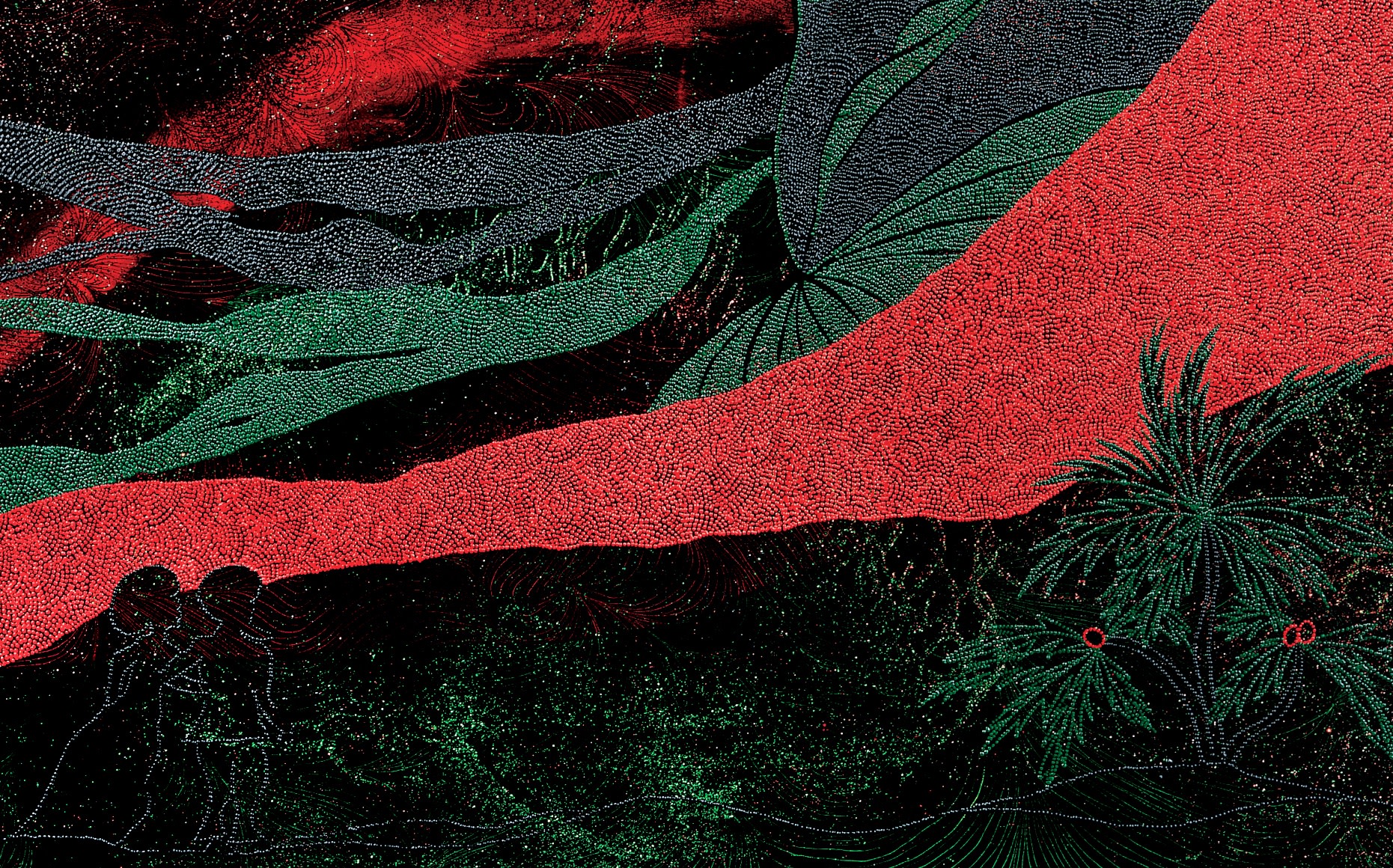
“Half way along the road we have to go,
I found myself obscured in a great forest…”
In one new canvas, a broad, lateral scarlet band running across the lower half of the canvas reminds me of a road and thus of travelling and a journey. The two outline figures, bottom left, are passing through an enchanted landscape. They are like the illustrations to The Divine Comedy, with Beatrice leading Dante towards Paradise. But the couple’s vision of themselves transfigured, which is projected upwards in the painting and fills the skies above them like gigantic, changing cloud shapes, assumes the outline shape of the two iconic black ‘Afromantrics’ - the sexy hero and heroine of the work we have seen elsewhere, surrounded by the verdant plant-life, encrusted foliage shapes and richly decorative undergrowth of a tropical jungle. What matters for the journey, which this series chronicles, is not arriving at some final Beatific Vision but the more earthly, carnal dreams and visions to be glimpsed along the way.

The themes of Freedom and Unity, with their African/African-American resonances sustained so powerfully… have been pushed further towards Love and Romance.
Africa, not the Tuscan countryside, is the inspiration here. Not Africa recollected in nostalgia or site of redemptive return, but ‘Africa’ re-imagined, a landscape of the mind, free for dreaming, visually recalled, as from another place – from elsewhere; ‘Africa’, not remembered but dreamt in its translated ‘Afro’ idiom. The themes of Freedom and Unity, with their African/African-American resonances, sustained so powerfully – and obliquely – by the restricted red, green and black colours borrowed from Marcus Garvey’s design for the Pan-African flag (which visually organized Freedom One Day and are intended to suffuse the Venice pavilion, with a newly designed red, green and black glass ceiling) have been pushed forwards, thematically, another half turn – further towards Love and Romance. This is no vision of perfection ('I think painting, or art, comes from the impure nature of things', he has said) but secular, resolutely ‘worldly’ and – to use Ofili’s own word – ‘pagan’. As he said of his monkey masterpiece, The Upper Room, ‘Religion and stuff'.
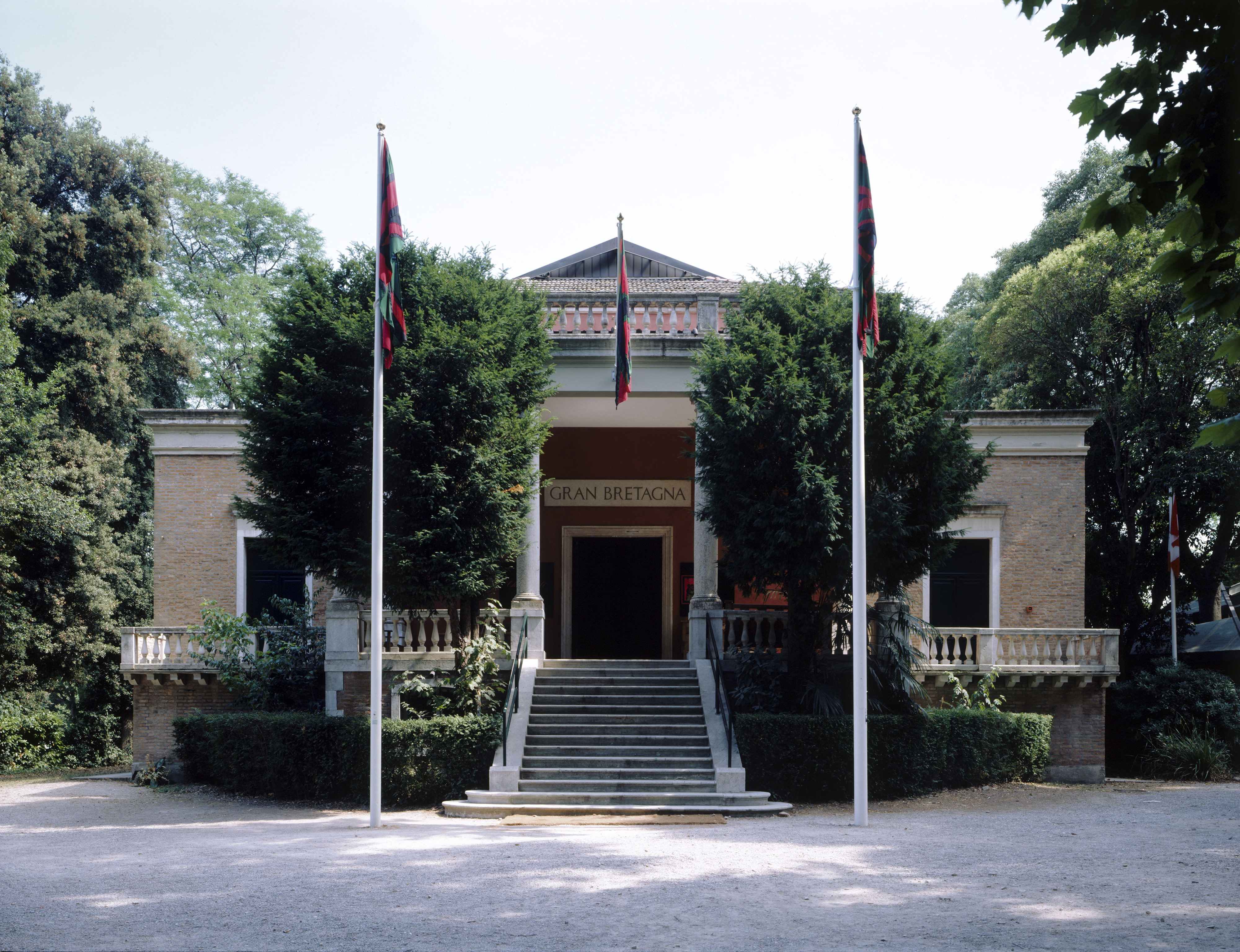
Ofili’s vision of Paradise may refer somewhere to the Bible, Heaven and the Promised Land – this would not be the first time these very different visions have been condensed in the African imaginary. The eye may have been partly informed, at some level we can’t any longer see, by Boticelli's Inferno, or Tintoretto’s Paradise. Ofili draws on a rich repertoire of multiple, overlapping references and his knowledge of European painting is extraordinarily wide and sophisticatedly unpredictable. However, his Afro ‘Adam and Eve’ have had many, more dazzling, disruptive and ‘vulgar’ antecedents in his work. And, as he told Jonathan Jones about the first Paradise series, there is also somewhere in there, 'a Caribbean island with aqua-blue water and palm trees and great cocktails and very accommodating natives and then it’s back on the charter flight to Leeds'. Don’t miss the irony, or the last laugh will be on you. Rigorously ‘of his time and place’, Ofili, the master of Afro-kitsch as high art form, has never taken lessons from anyone about who or what he is entitled to ‘mix’.

The imaginary at work here is irredeemably ‘off-shore’, post-colonial, diasporic. And it affirms, against the grain, embracing its own creative powers: This Paradise is possible now. It is within reach.
All the same, don’t miss or mistake, either, the commitment – to what painting can do, in the age of conceptualism and the installation; or the engagement – with the vision of exotic/erotic love; or the seriousness – about what it is possible for the Afro-imaginary – as C.L.R James said, 'in but not of Europe' – to see and say now – which the irony only partially disguises. The fact is, no European artist would or could conceivably dream in these forms and colours today. The imaginary at work here is irredeemably ‘off-shore’, post-colonial, diasporic. And it affirms, against the grain, embracing its own creative powers: This Paradise is possible now. It is within reach.
Narratives and themes, however significant for what ultimately we take away, are subordinated in Ofili’s work to the painting. Or rather, each element plays into the other, depending on what you are looking at or where you stand in relation to the canvas. The paintings work like palimpsests, built up layer on layer: though this does not create the usual effect of an impacted integument of paint but, instead, makes them seem transparent and translucent – not without depth, but translated into a flatter plane. This may partly be the effect of the layer of resin which covers the surface like glass, or of the glitter, gold leaf and coloured glass pins out of which surfaces and lines are built. The paintings, at any rate, glimmer, twinkle and glisten at you. They pulsate with the intense but ‘cool’ interior light of the forest.

This light, too, is not ethereal but material. Sometimes its rays splinter and shatter like shards of red glass all across the surface. Sometimes it quietly explodes in a geometrically shaped array.
As it happens, light is also a recurring theme in the series: like its predecessors, each love scene has a radiating red, green and black orb in its upper left hand corner, looking down on, keeping guard over, watching out for the ‘divine couple’, with its signature, decorated, elephant dung centre (how little this petty ‘scandal’ seems to matter anymore). This light, too, is not ethereal but material. Sometimes its rays splinter and shatter like shards of red glass all across the surface. Sometimes it quietly explodes in a geometrically shaped array. Sometimes it is stealthily threaded between and behind the foliage, enfolding the scene in a network of black, felt-tipped light-lines.
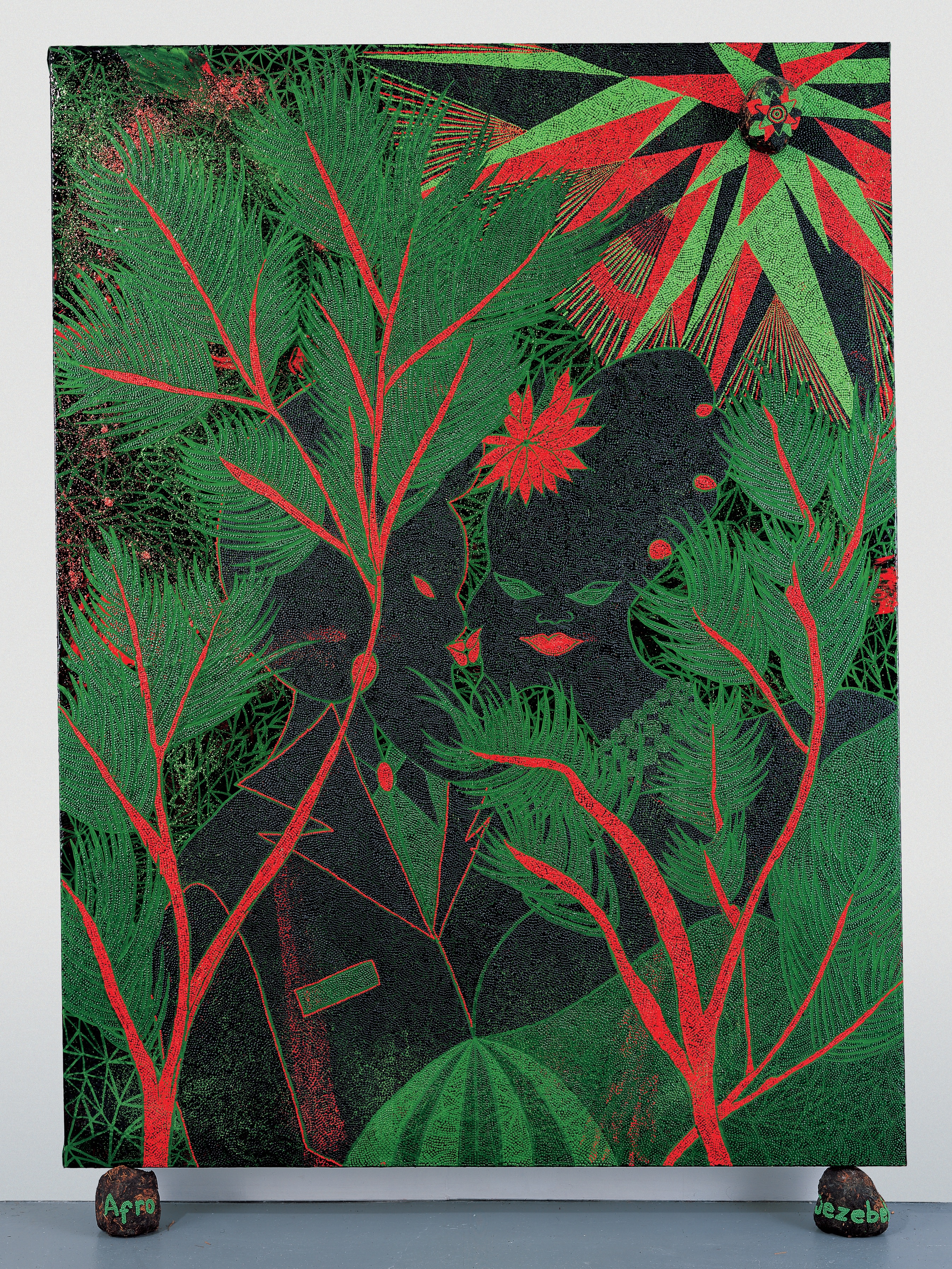
The level at which the painting ‘signifies’ moves constantly between foreground and background, depending on where you stand. From a certain distance, the canvas suddenly comes together – falls into place – as a ‘scene’. Central to this are the two red-outlined, black, formalised, cartoon-like figures, smartly dressed-up or luxuriantly nude, locked into an intense, romantic/erotic relationship with each other – their fiery, red lips pursed for the kiss, his eyes glowing white like coals, her necklace aglow. The apochryphal story of their ‘origin’ in the designs Ofili once saw used on a dry-cleaning bag used by a Trinidad laundry is intriguing, like a lot of Ofili stories (there is just a hint of a question as to whether he deliberately generates them himself). But the truth is that Ofili has been drawing, in addition to his great decorative portraits of black divas, outline cartoons of a voluptuous black woman with African-coiffured hair and a man with a Rasta beard like a floating phallus, for years – on and on, proliferating across the walls like, at an earlier point, his Michael Jackson Afro heads. Retrospectively, we may say, the ‘series’ rather than the single canvas has always been Ofili’s natural metier. Nevertheless, in their present form and scale, the blackness of these odalisques gives them an eerie existence, for they are both ‘modern’ and ‘ancient’, somehow ‘central’ to the whole work while often not so much stepping forward from the lush background as forming part of it, absorbed back into nature, in a complex figure/ground reversal.

If you take a step back, they ‘disappear’. Their red outlines become part of the labyrinth of trailing liana-like lines that cover the canvas or certain parts detach themselves from the figure and take on a visual life of their own. The man’s blazing red shirt and tie, for example, float free of his body, and hover like a memento mori. At this distance, it is the stylised tropical natural forms – the luxuriant plants, the exotic coconut trees, the bamboo and poinsettia leaf and flower shapes in their swirling, rhythmically repeating patterns – which seem to be ‘the subject’. But move in much closer and one encounters the dense, richly-worked network of stippled lines, raised dots, ripples and ‘dribbles’ which is where the ‘brush-work’ of the painting – reinforced by the obligatory, but now submerged drawing and blocking out with which it all started – is being done. When Chris Ofili says he has been ‘working some more on this painting’, he means he has been building up the surface some more, and in the process constantly changing the contours of the painting at this micro-level of operation.
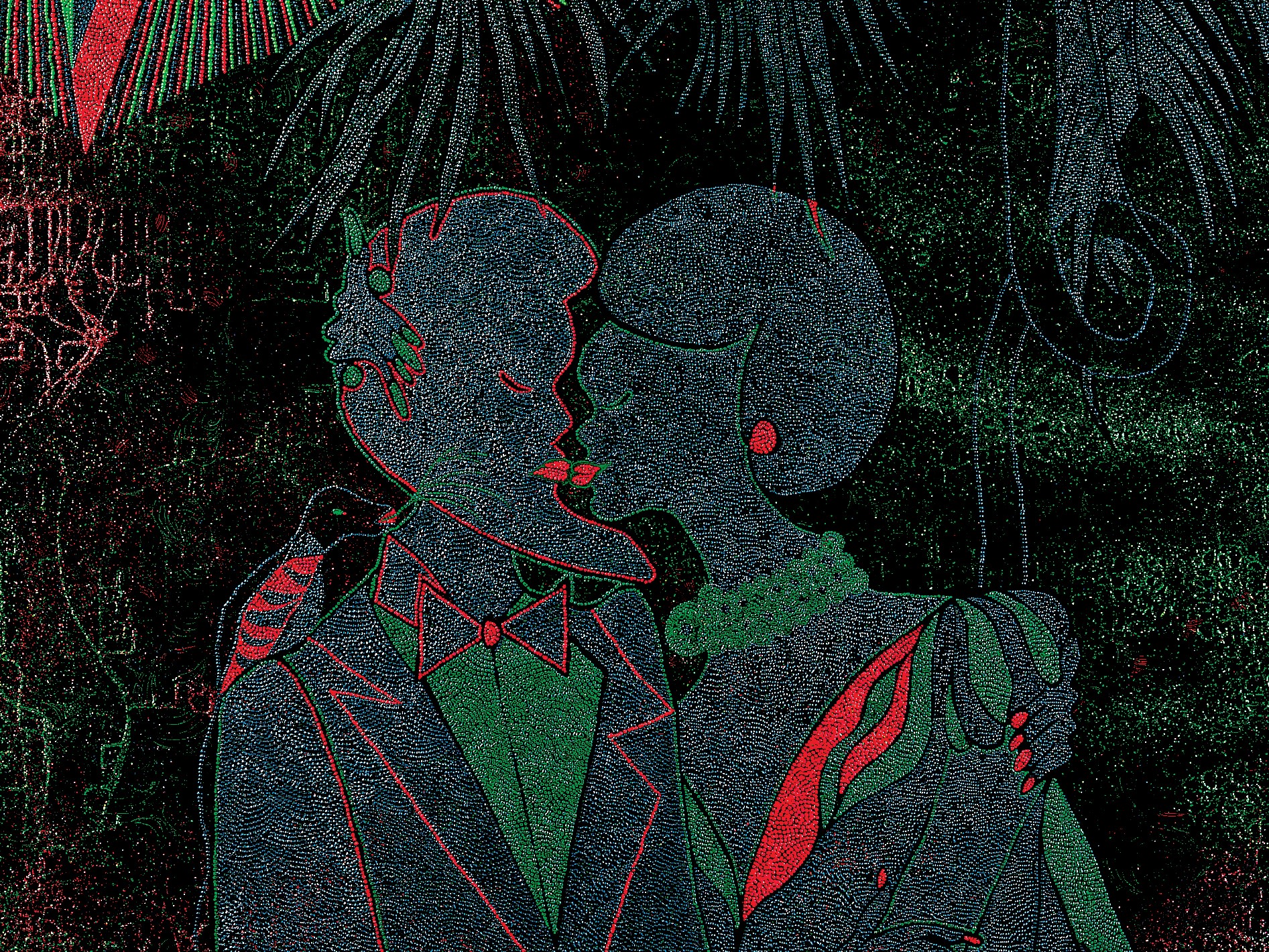
This Paradise plays with ‘the primitive’ but is ultimately too ‘knowing’ for that. It passes through the primitive without being captured by it. It nods towards Douanier Rousseau, but only as a gesture of recognition between two artists ultimately going in different directions. It is neither pre- nor post-lapsarian: the looks between the lovers are too openly carnal for that. It is, to coin a word, ‘lapsed’. Old Snakey is already inside the picture. Occasionally, we catch a glimpse some part of his chequered body, coiled contentedly around something. The simplification, with which everything has been treated is an aspect of a formal complexity, not the fantasy of a return to innocence. Wickedness (evil is too strong a word) has not been banished from Paradise because it is an intrinsic part of the vision.

A ‘wicked’, satanic, black devil-figure with blazing red eyes – some conjuror, ju-ju man or Anansi spider figure – occupies the centre of another painting, but he too is the recipient of a kiss on the cheek from that black lady with the lustrous lips, the reclining Madame Triple Beam Dreamer, from his stunning 2001 canvas. The ‘satanic’ figure may be there to remind us of the inevitable limits to joy and happiness, but every ‘world’ has its limits, every ‘paradise’ is incomplete. Besides, Ofili has been drawing and painting Super-Fly and hip-hop ‘bad boys’ for ages. As elsewhere in his work, there are hints of a religious or spiritual motif here and there, but that is not what the paintings are ‘about’. If this motif is anywhere, it is in the exuberant, pan-theistic receptivity to nature and the ‘way of the world’. The dichotomous Christian world of good and evil or the western binary of barbarism and civility are simply not appropriate here.

One cannot think of a contemporary visual artist whose fecund and excessive visual imagination is more fully saturated with the imagery of the diasporic black imaginary…
Chris Ofili has sometimes been criticised for his irony and evasiveness in not addressing the so-called political questions of ‘identity’ more directly; letting himself off the hook, while allowing the critics to use his work to poke fun at his more seriously committed, ‘politically-correct’ peers. In the light of his recent work, this criticism now seems misdirected. There is more than one way to skin a tiger. Besides, what matters much more is that one cannot think of a contemporary visual artist whose fecund and excessive visual imagination is more fully saturated with the imagery of the diasporic black imaginary – all of it, African/African-American/Afro-Caribbean/Black British – with no respect for imposed boundaries of appropriateness or taste. Within Reach represents a dazzling new instalment of this evolving story, by a contemporary master. Long may the outrage continue.

About Stuart Hall
Stuart Hall (1932–2014) was a Jamaican-British academic, writer and cultural studies pioneer. Among his many accomplishments, he was a Rhodes scholar at Merton College, Oxford, and Professor of Sociology at the Open University, a member of the Runnymede Commission on the Future of Multi-Ethnic Britain, chair of Iniva and Autograph ABP, the first editor of New Left Review, a founding editor of the journal Soundings and author of many articles and books on politics and culture.
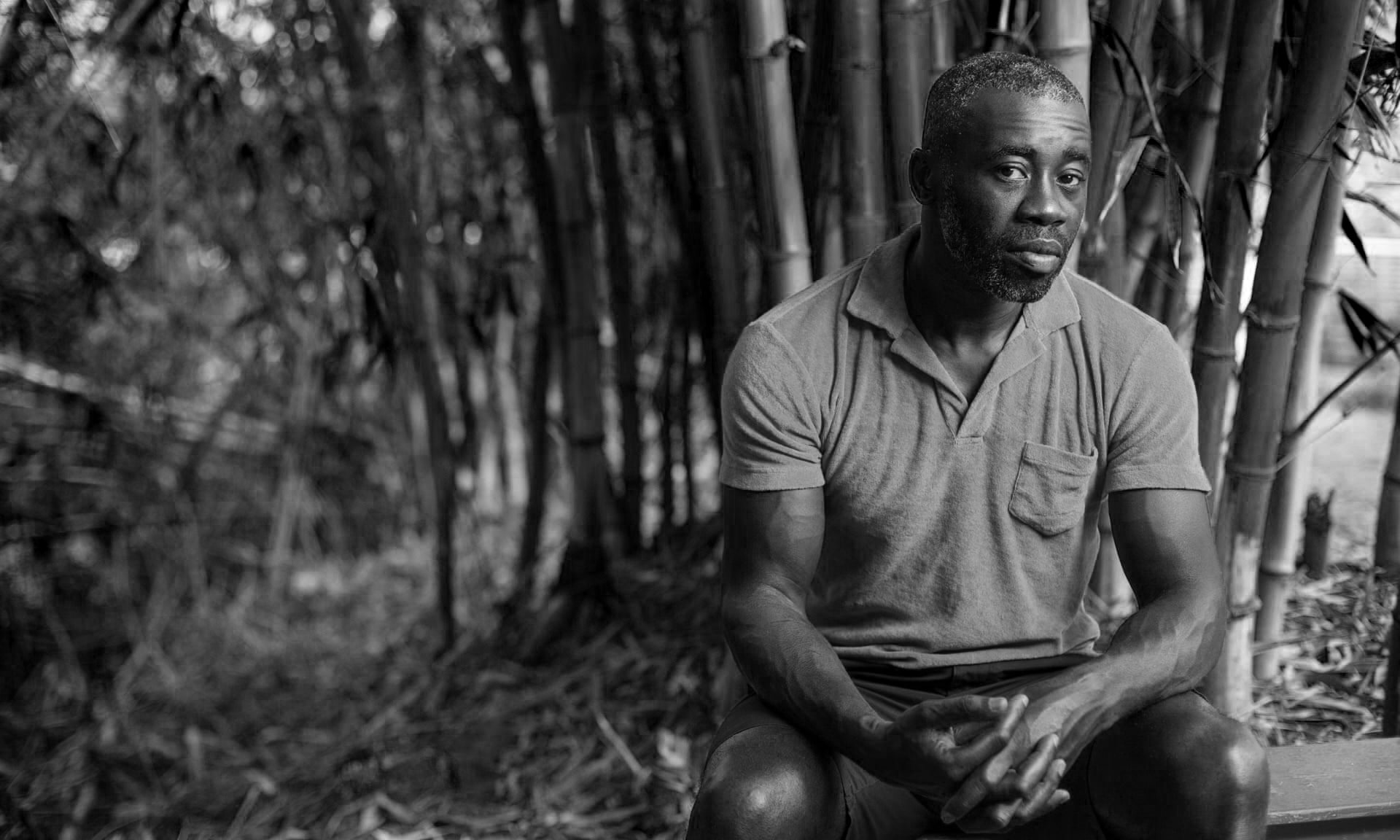
About Chris Ofili
In Chris Ofili’s work painterly and cultural elements – both sacred and profane, personal and political, from high art and popular culture – come together to play on ideas of beauty while carrying messages about black culture, history and exoticism. His is a highly seductive art of braided connections that draws on a wide range of sources – including jazz and hip hop music, the Bible, and the works of artist and poet William Blake – and works on many levels, physically and metaphorically.
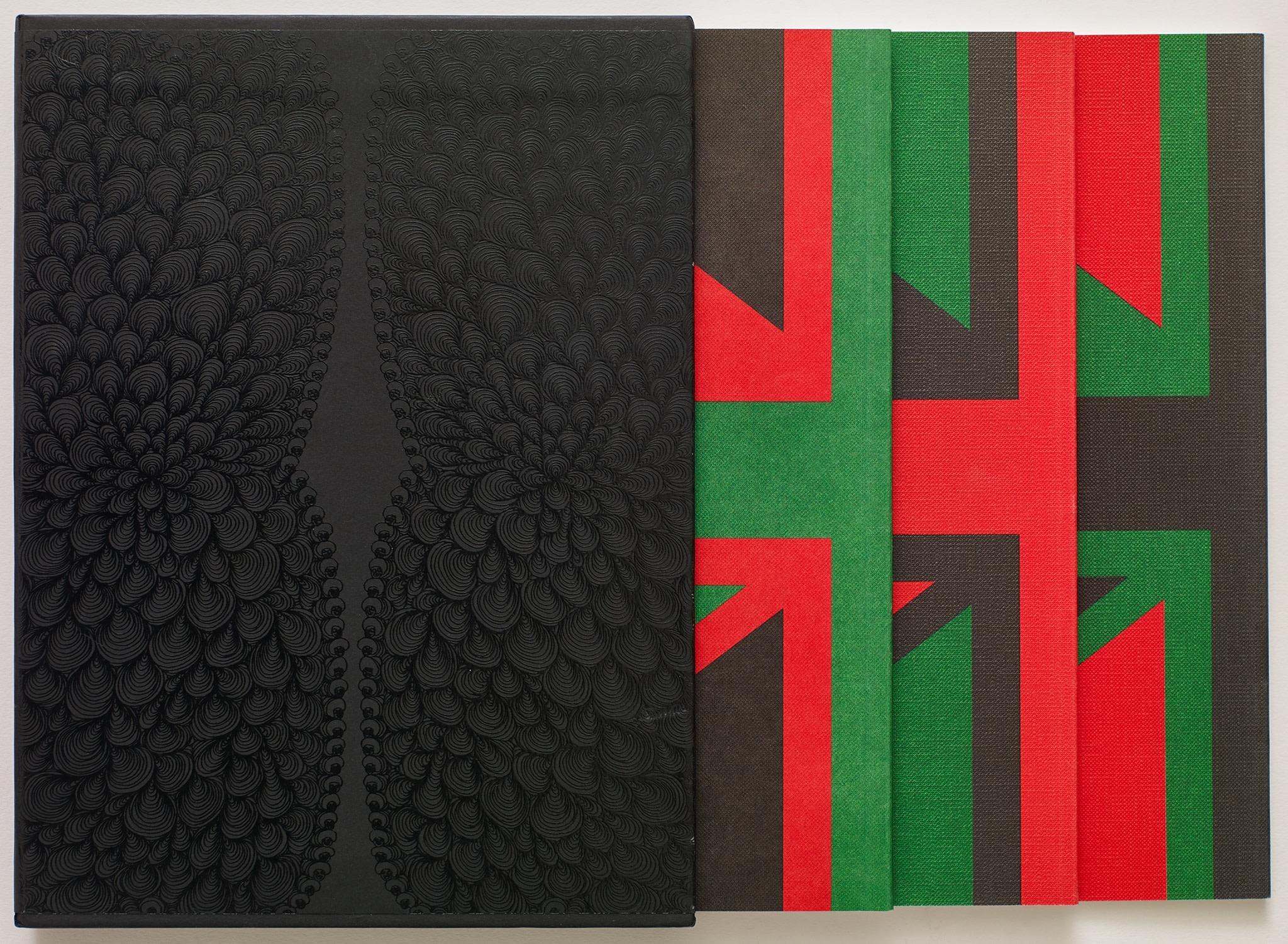
Afro Apparition, 2002-2003. Acrylic, oil, polyester resin, glitter, map pins and elephant dung on linen with two elephant dung supports. 275 x 214 cm, 108 1/4 x 84 1/4 in.
Portrait of Stuart Hall courtesy of the Stuart Hall Foundation
Portrait of Chris Ofili © Kibwe Braithwaite
All works © Chris Ofili
Courtesy the artist and Victoria Miro
Exhibition conceived by Chris Ofili Designed with David Adjaye/Adjaye Associates.
Installation photography: Cameraphoto Arte, Venice.